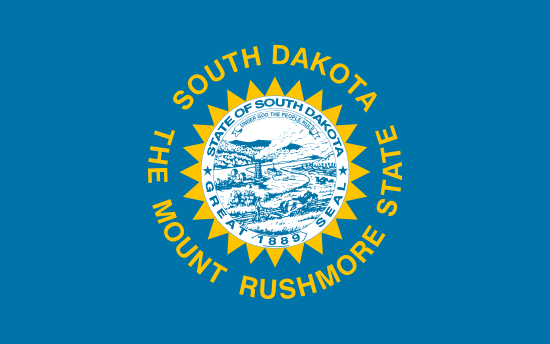
South Dakota
- Statehood Year:
- 1889
- Capital:
- Pierre
- Largest Cities:
- Sioux Falls, Rapid City, Aberdeen
- Abbreviation:
- SD
South Dakota is a state in the Midwest region of the United States, known for the Black Hills, Badlands, and Mount Rushmore. It has a population of 931,033, making it the 46th most populated state in the country. The capital city is Pierre. South Dakota has a agriculture and tourism-driven economy.